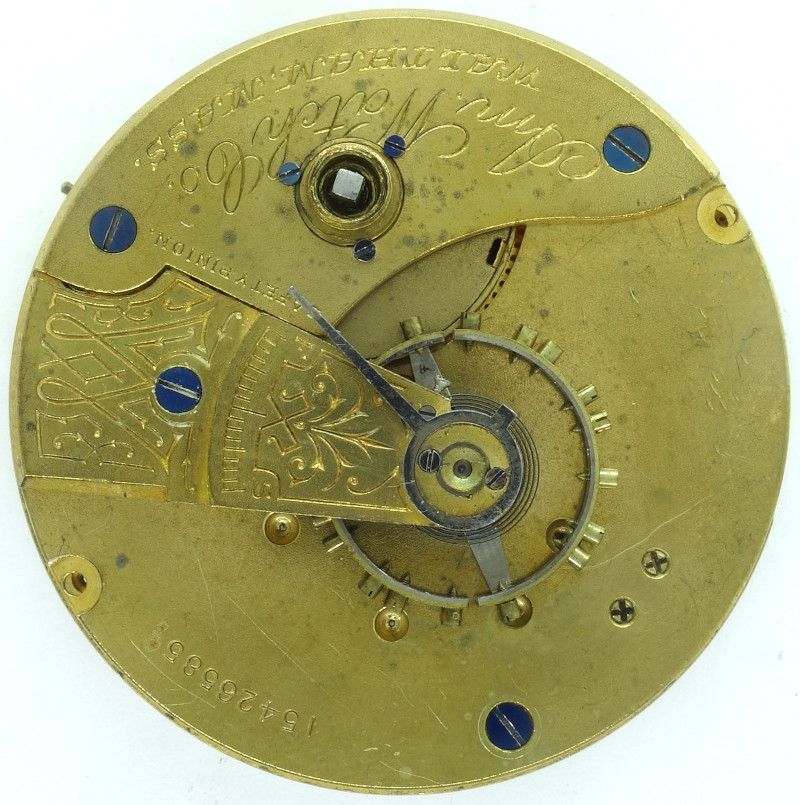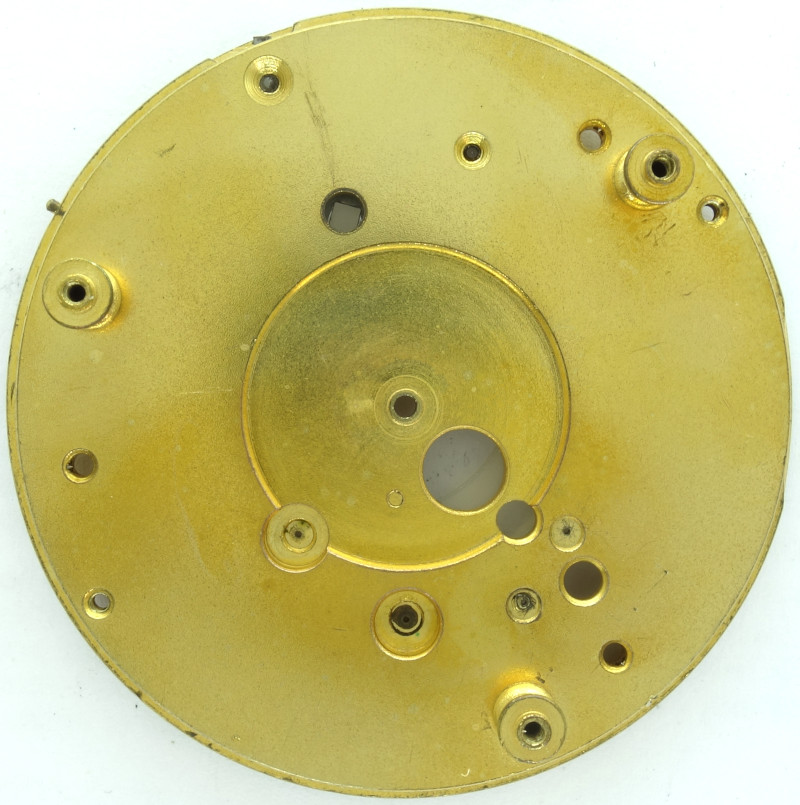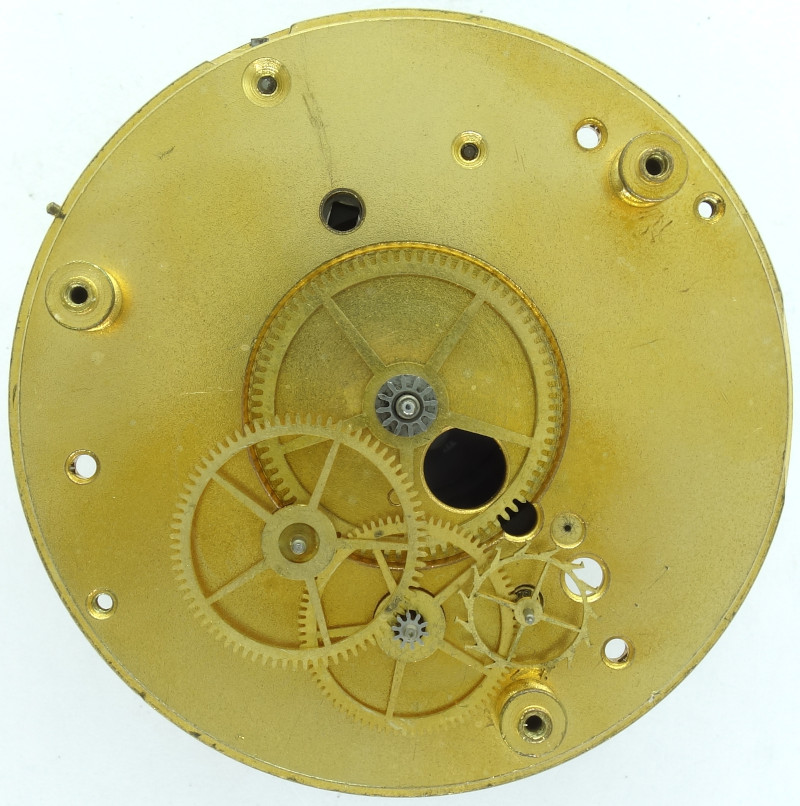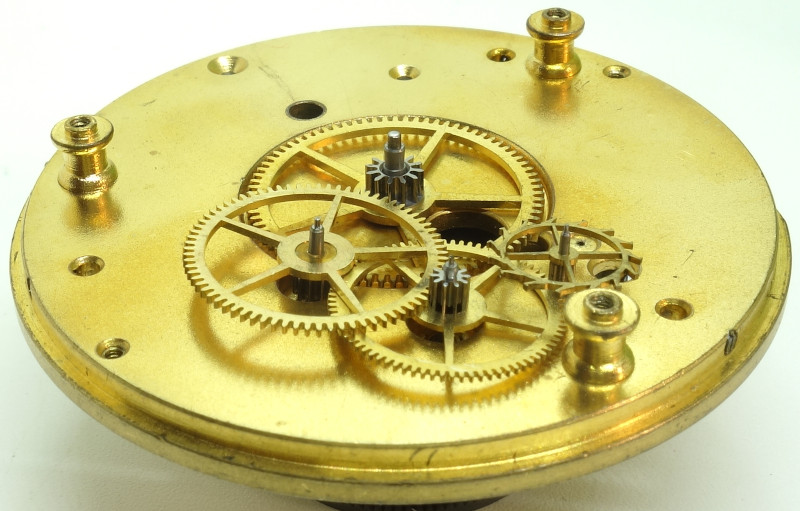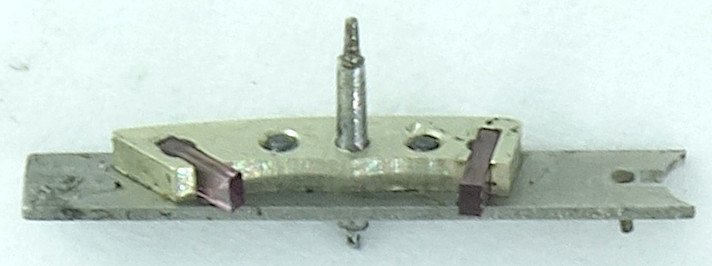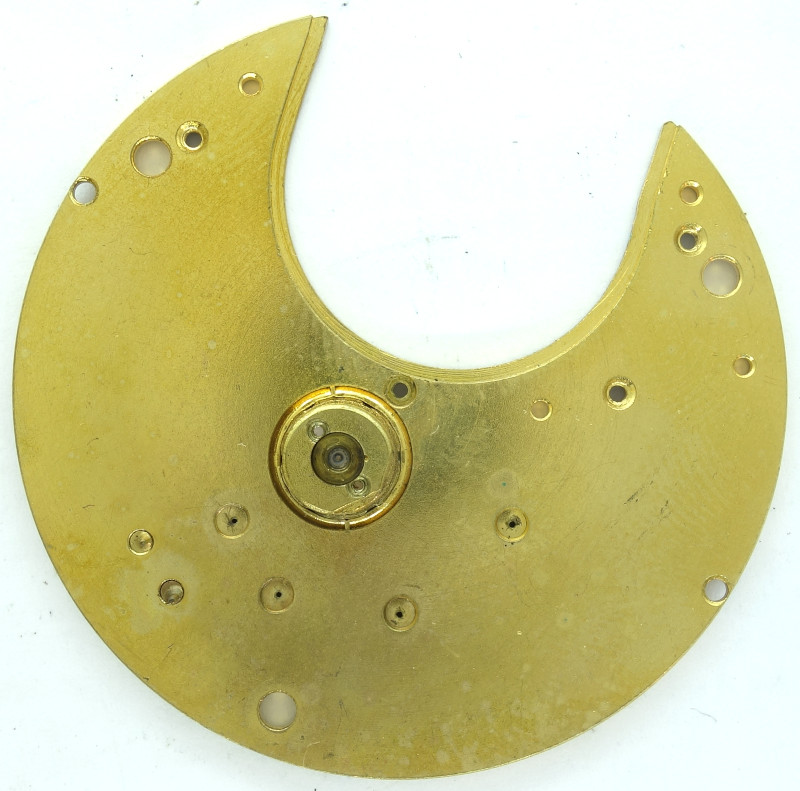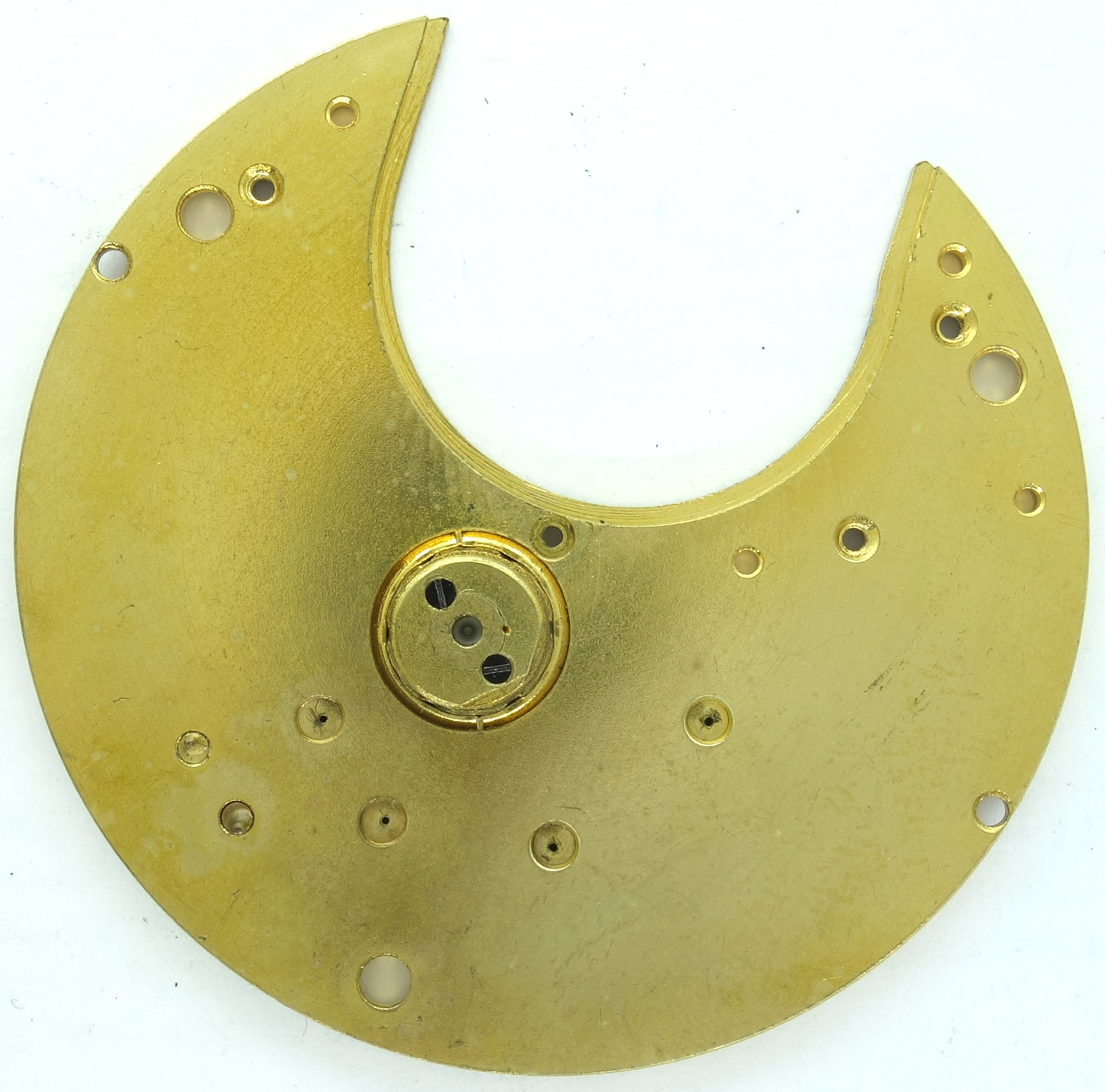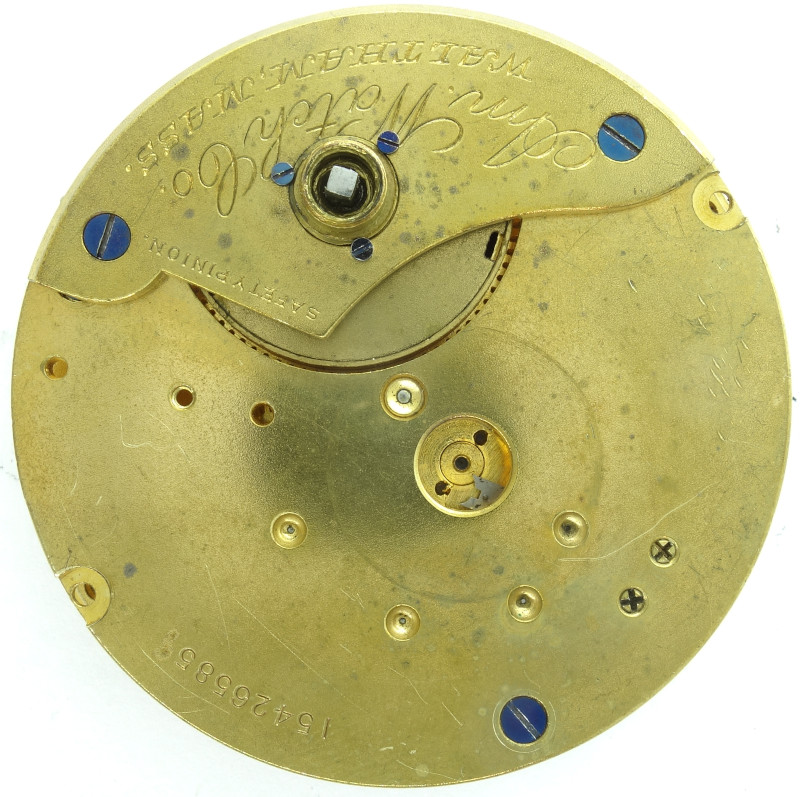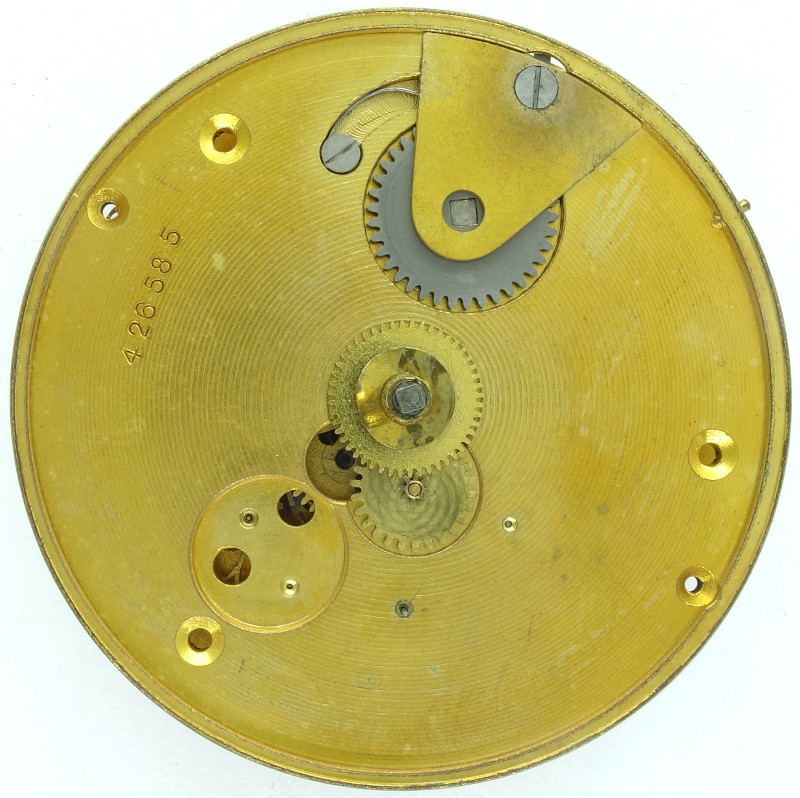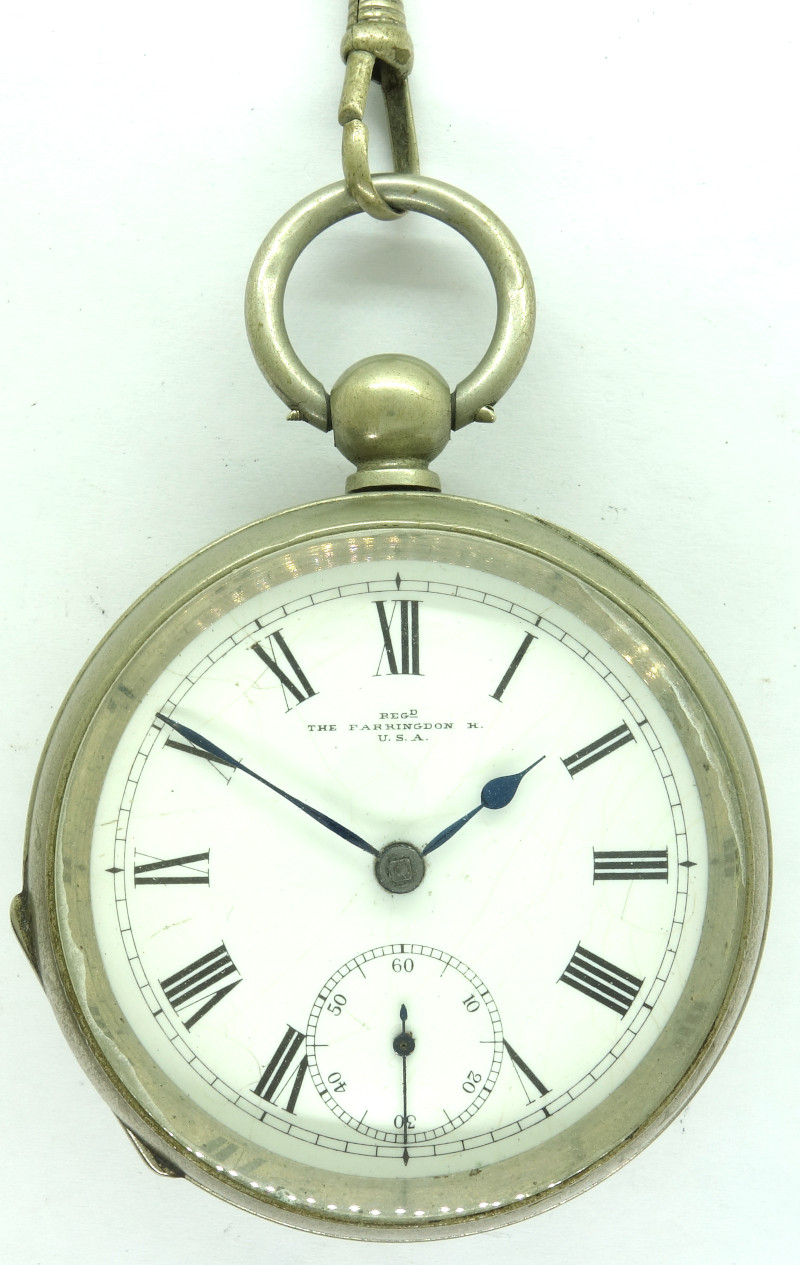Description
For European standards, the american pocket watch caliber Waltham Size 18s Model 1883 is unusual, since it has got an attached and not integrated balance and still uses a key for winding and time setting, although it was made around 1900.
With a diameter of almost 44mm (18s in american size) it is very large and with a height of more than 10mm, it builds very high, too.
There are no bearing rubies on this movement, only the balance wheel is ruby-beared, but not on the pase plate, see below.
There’s the classical gear train with mainspring barrel, center minute wheel, third wheel, decentral seconds wheel at 6 o’clock and the escape wheel.
The coarse lever matches neither the much better aesthetics of the whole movement, nor the aesthetics of a swiss pallet lever, but it has got pallets made of synthetic rubies.
The balance wheel is located within a cylinder, which is attached to the upper gear train plate. Here, the only four rubies are used, two pairs or cap- and bearing of the balance wheel staff.
In contrast to the not very filigree execution of the movement is the usage of a Breguet hairspring and the large bimetal screw balance. With that combination, the beating rate of 18000 A/h should be achived easily, especially, since a longn regulator arm is used for the adjustment.
The balance is located under its own cock, which is attached on top(!) of the gear train plate.
When the balance wheel is not mounted, you can see the lateral lever.
On the dial side, you immideatly recognise the lack of a winding system. The movement is wound on the movement side with a key, and the time is set on the dial side by the same key. For 1900 pretty outdated!
In the lab
Timegrapher result
Despite the Breguet hairspring, the rate values remained far below expectations, probably a tribute to the age and the somewhat antiquated construction method.Whether the amplitude values are correct remains to be seen, as the lifting angle is not known, and therefore the standard value 52° was assumed.
The enormous beat error is noticeable, but unfortunately this cannot be easily adjusted.
| horizontal positions | |||
|---|---|---|---|
| dial up | +12 s/d | 142° | 8.9ms |
| dial down | +1 s/d | 139° | 8.8ms |
| vertical positions | |||
| crown right (12 up) | +61 s/d | 160° | >= 9.9ms |
| crown up (3 up) | -73 s/d | 138° | >= 9.9ms |
| crown left (6 up) | -93 s/d | 171° | >= 9.9ms |
| crown down (9 up) | -19 s/d | 138° | >= 9.9ms |
Technical data
| Manufacturer: | Waltham |
| Caliber: | 18s Model 1883 |
| Size: | 18s (measured: 43,9mm) |
| A/h: | 18000 |
| Number of jewels: | 7 |
| Escapement: | Pallet lever |
| Balance types: | bimetallic screw balance (two legs) |
| Shock protection(s): | none |
| Balance bearing / direction hairspring: | Clockwise |
| Moveable stud: | no |
| Adjust mechanism: | Long regulator arm |
| Construction: |
|
| Construction type: | pillar construction |
| Winding mechanism: | key winding system |
| Features: |
|
| Inventory number: | 23016 |
